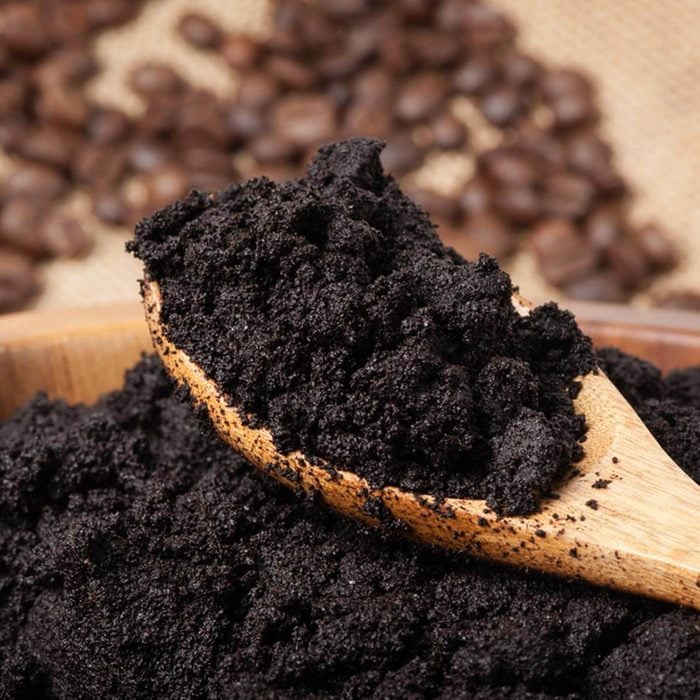
Coffee Grounds
Let’s start by debunking a common folk remedy. While it’s true that dropping coffee grounds into your garbage disposal reduces odors in the short term, it can actually cause more serious problems down the drain. To understand why, think about what used coffee grounds look like when taken out of a filter: They reduce into a dense, thickly packed wad. And that is exactly what you don’t want going in your drain lines!
Leave the grounds out of your disposal, and repurpose them these 6 different ways.
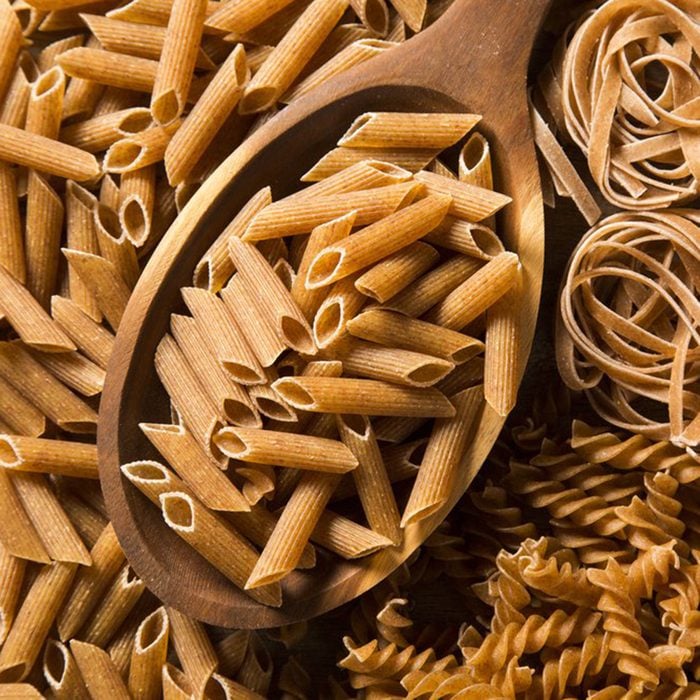
Pasta
Anyone who’s made spaghetti knows that pasta expands when soaked in water. Given that, you can see why you might not want to drop lots of pasta into your disposal and drain where it will, after all, soak in water and keep expanding.
Like most of the items on this list, a few scraps cleaned off of a plate won’t hurt, but don’t try to dispose of an entire pasta casserole. When you do run pasta through the disposal, run the water as cold as it will go for 30 seconds afterward, to flush it through the trap and into the mainline. Otherwise, you’re likely to run into clog issues, as this firsthand account will attest.
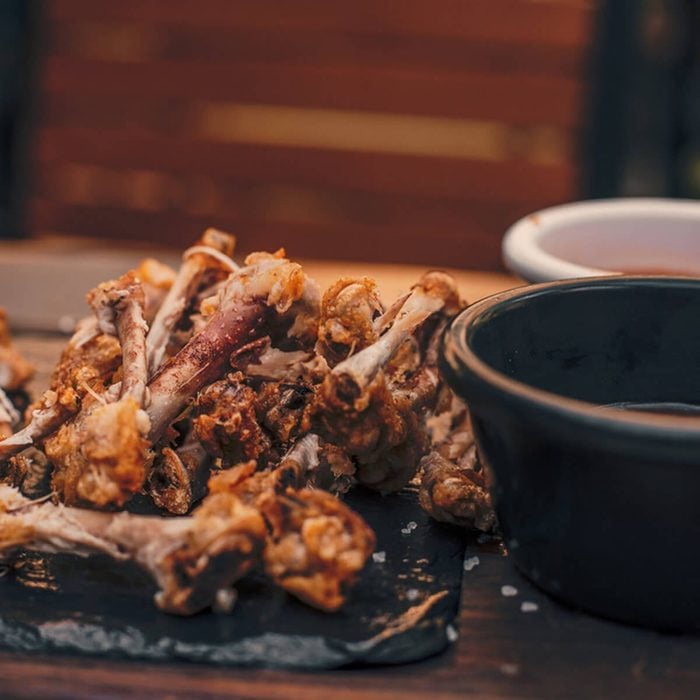
Bones
Garbage disposals are wonderful at grinding up and disposing of food waste. But they simply aren’t made to deal with extremely hard items, such as bones. If you do drop a chicken wing or fish bone in the disposal, don’t panic. Disposals are hardy appliances, and can handle grinding up the occasional small bone. But if you try to drop a rack of ribs down your sink and grind them up, you’re setting yourself up for disaster.
Instead, use those bones to make some amazing homemade broth (here’s how to do it!).
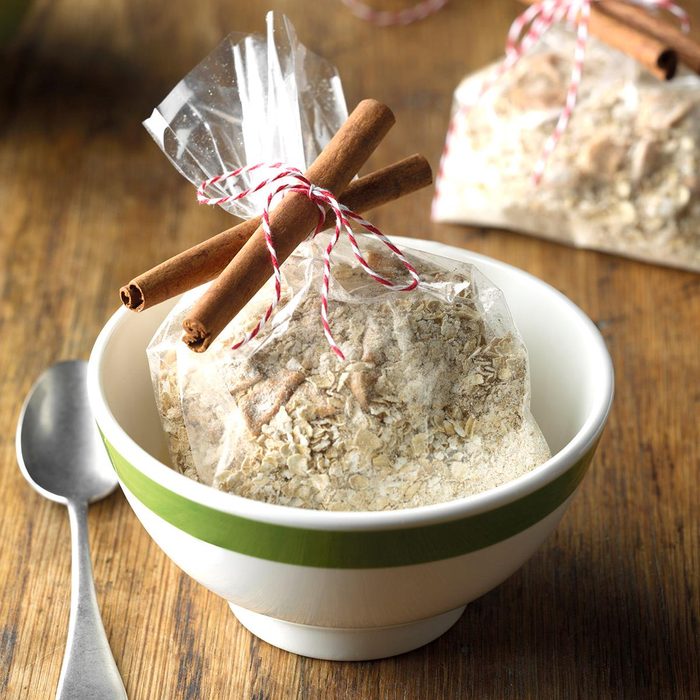
Oatmeal
Much like pasta, oatmeal is another expansion threat. Uncooked oats, in particular, are likely to slip through the disposal untouched, only to collect and expand down-line. If you’re lucky, they’ll eventually flow out to the sewer. If you’re not… well, then it might be time to refresh your advanced drain-cleaning skills.
Next time you’re making oatmeal, give one of our 20 best oatmeal recipes a try.
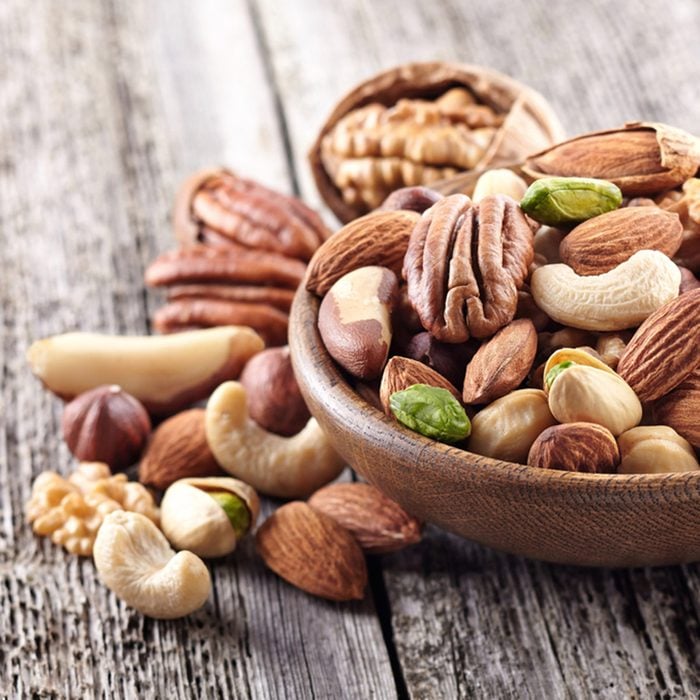
Nuts
If you ever find yourself about to dump several handfuls of peanuts down your garbage disposal, take a moment to consider how peanut butter is made: Handfuls of peanuts are dumped into a grinder, where they’re spun and mashed into a sticky, thick paste. And your garbage disposal is an excellent appliance-sized version of a nut grinder. Limit the amount of peanuts (and other varieties of nuts) that drop into the disposal and you’ll be far better off.
Peanut butter is the highlight of these sweet-and-salty dessert recipes, but a disposal lined with peanut butter is a pain to clean out and a potential clog to your drain.
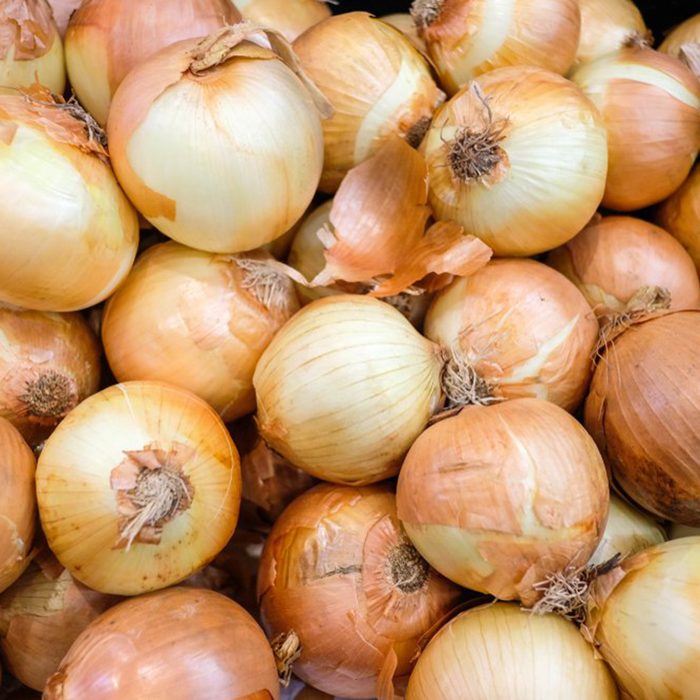
Onion Skins
Chopped, diced or in chunks, most onion waste shouldn’t be a problem for your disposal. The problem comes with the thin membrane that lies just below the dry, outer-most layer of an onion. That thin, wet layer is often removed before the onion is chopped, and thrown into the disposal. But the layer is so thin that it can pass through the disposal, missing the blades and wind up wedged in the drain, where it acts like a net, catching more items and holding them in place.
Luckily, it’s fairly simple to avoid this problem. Just drop the thinnest outer layer in the trash, or cut it up before dropping it in the disposal. It’s a few seconds of work that can save you hours of work or an expensive visit from a plumber.
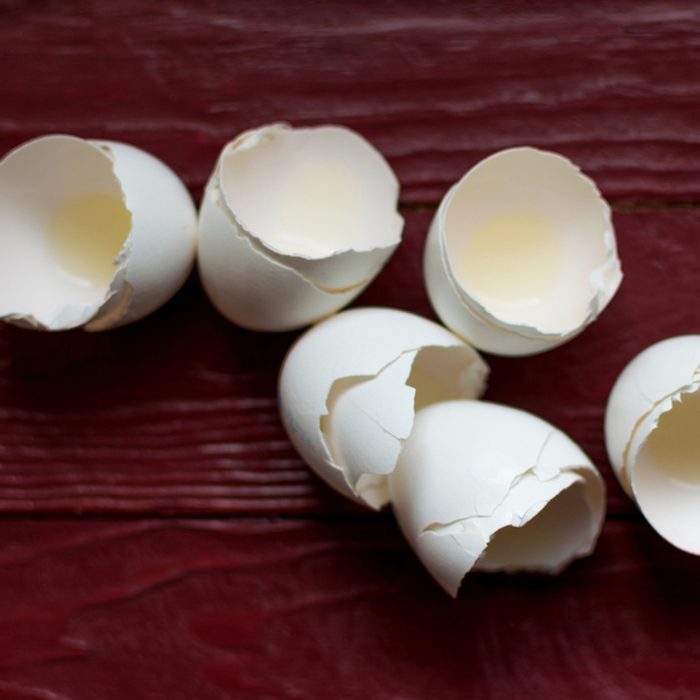
Egg Shells
You may have heard that it’s a good idea to drop egg shells into the garbage disposal. The idea is that the shells somehow sharpen the blades mounted on the disposal wall. It’s hard to say where this theory got started, but if you stop to think about it, when was the last time you’ve seen anyone sharpening knives and lawnmower blades with a carton of eggs?
While eggs don’t do much to help your disposal blades, at least the shells themselves don’t do any damage. However, the next time you crack an egg, take a close look at the shell. You’ll see a thin membrane on the inside of the shell that can (like that thin membrane of an onion) get loose and lodge in the drain or around the impeller (the rotor that throws waste against the wall-mounted blades).
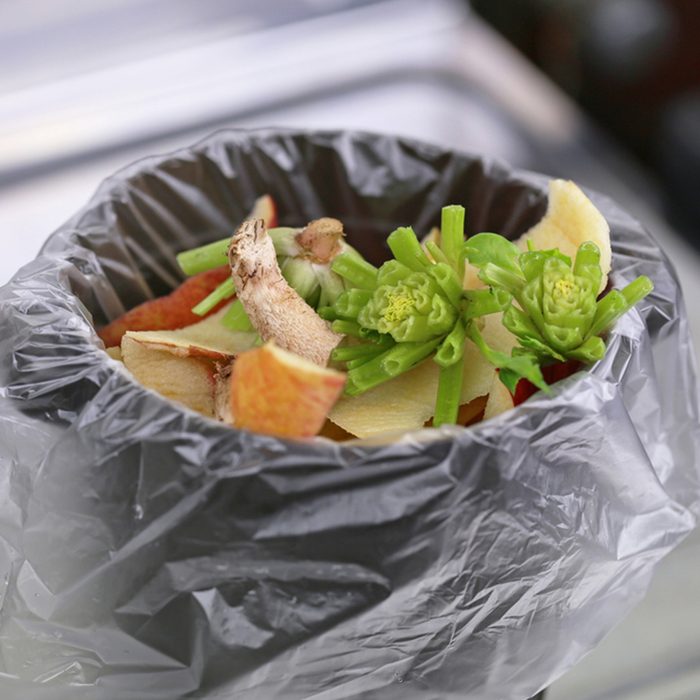
Trash
Okay, speaking of trash, it’s worth saying this officially: We know it’s called a “garbage” disposal. That doesn’t mean that you should put all your garbage in it. Talk to a plumber or handyman, and you’d be shocked by how many times they need to dig out paper towels, bags, candy wrappers and banana peels that definitely don’t belong in the disposal.
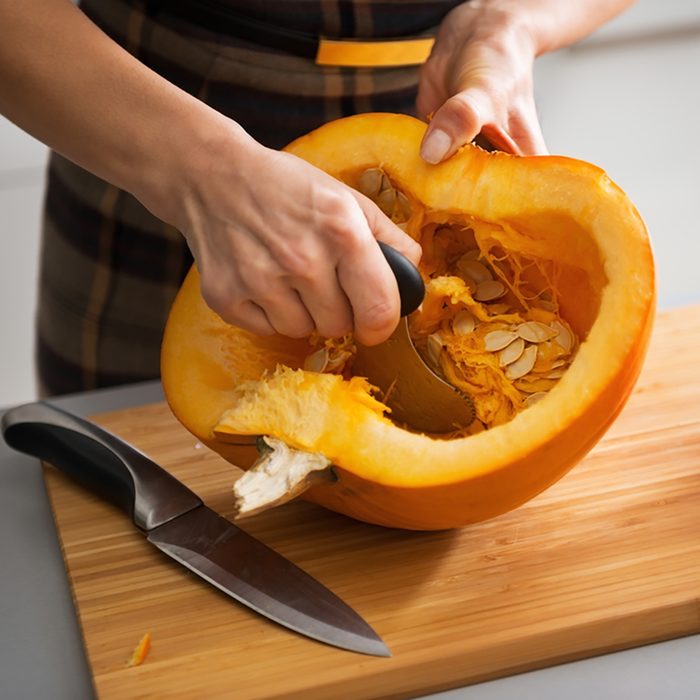
Pumpkin and Fibrous Vegetables
If you’ve ever hollowed out a pumpkin for Halloween, you know how the long strands can get caught on your hand and scooper, turning the whole situation into a sticky mess. Avoid transferring that mess into your disposal by disposing of guts in the trash (but save those pumpkin seeds and learn how to roast them).
The same goes for veggies like celery and rhubarb. Throw long, stringy stalks straight in the trash to keep the fibers from causing a problem, but don’t worry about small pieces. When chopped up, the fibers are small enough to not cause a problem.
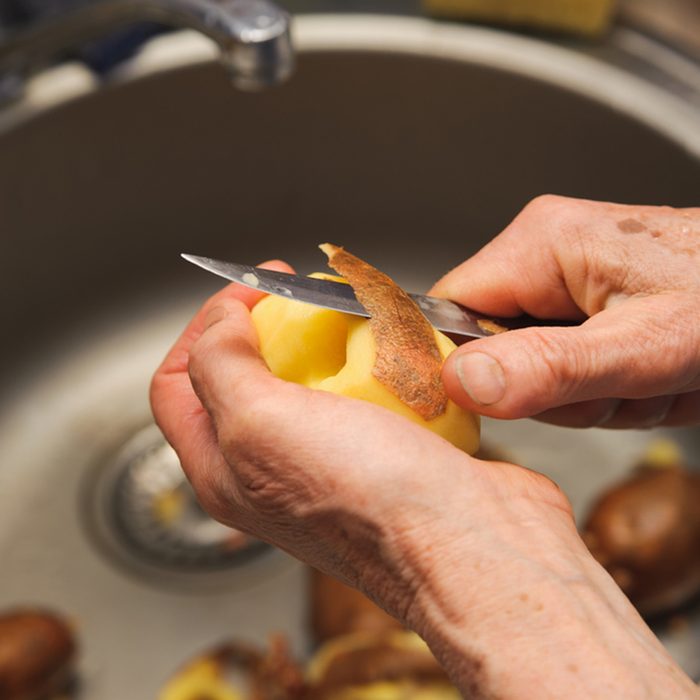
Potato Peels
Potato peels are thin enough to slip past the disposal, potentially catching in the drain. There they can cause the same issue as the egg membrane, acting like a tiny catcher’s mitt, holding up other waste and creating a clog.
Again, a few peel pieces are nothing to worry about, but if you’re making one of these mashed potato recipes, the stack of peels will quickly add up. If you do overload your disposal, try these simple appliance fixes to see if you can get it up and running quickly.
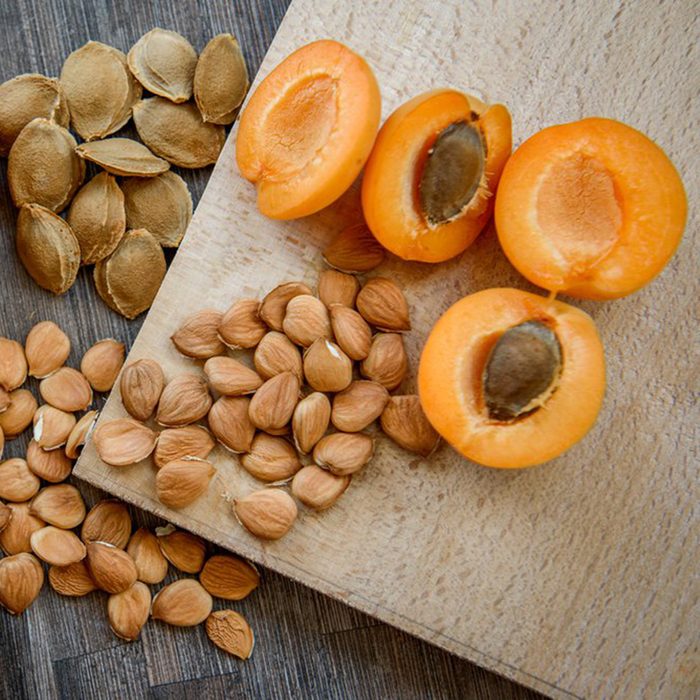
Pits
Peaches are delicious, especially when turned into one of these irresistible desserts, but they have incredibly hard, dense pits in their center. As a good rule of thumb, if you can’t chop it with a knife, it’s not going to grind up in the disposal.
If you do make a habit of dropping too-hard items in the disposal, it normally won’t kill the motor, but you’ll end up with a machine that isn’t disposing of waste properly. Eventually, you’ll just grow frustrated with it and end up replacing the unit.
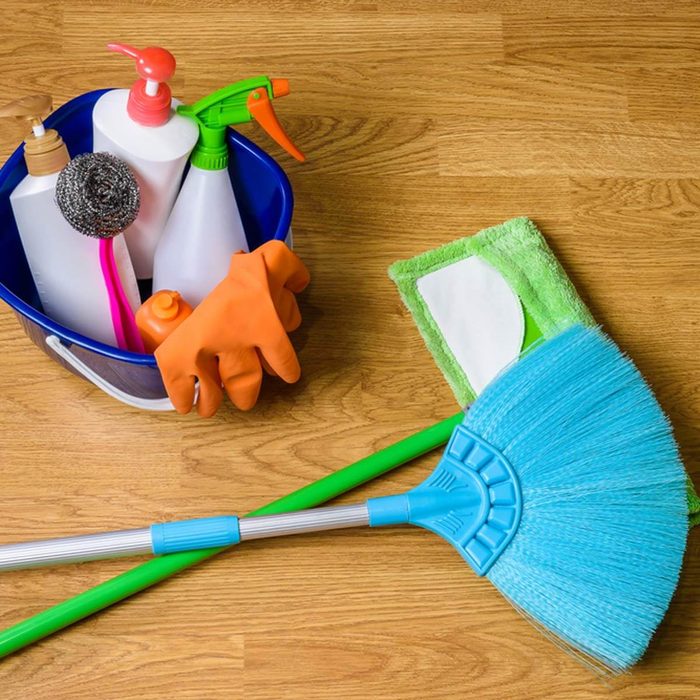
Cleaning Chemicals
We’re not talking about dish soap or regular cleaners, those are fine for normal use. The chemicals to avoid are harsh drain busters and industrial-grade cleaners as they can put excessive wear on your disposal and possibly even the drain line.

Paint
This is one mistake that DIYers are especially prone to committing. Latex or oil paint should never be poured straight down the drain. It can cling to the side of the disposal or sit in pipes, where it will begin to cure and harden into an intractable clog. Again, a little paint heavily diluted won’t be an issue as long as it’s heavily diluted. But brushes and rollers should be cleaned with some forethought, using an appropriate container, while bulk paint should be disposed of appropriately.
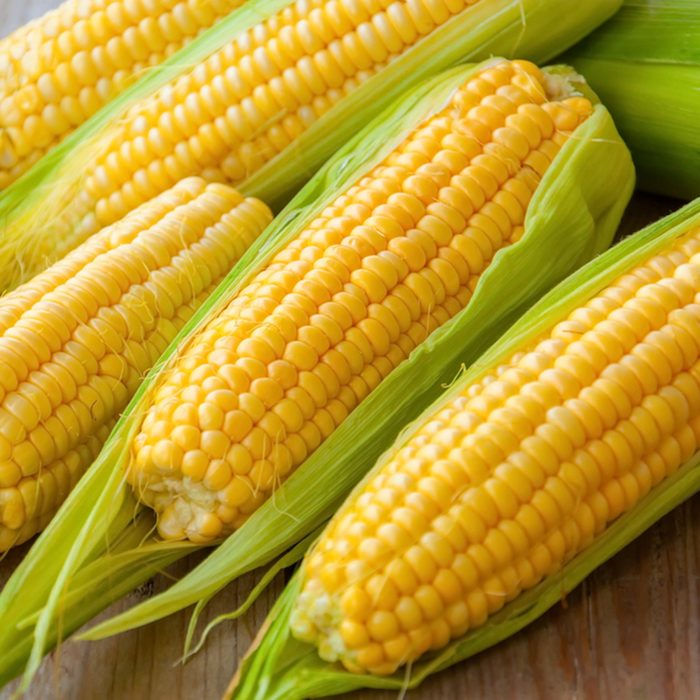
Corn Husks
Husking corn creates a tremendous amount of waste, and as much as possible should go in the compost pile or trash, rather than the garbage disposal. The robust, fibrous husk and fine threads of corn silk create a dual threat for disposals.
So, when you’re preparing to make one of these corn on the cob recipes, it’s a good idea to husk straight into a bag, and not let it near the disposal at all.
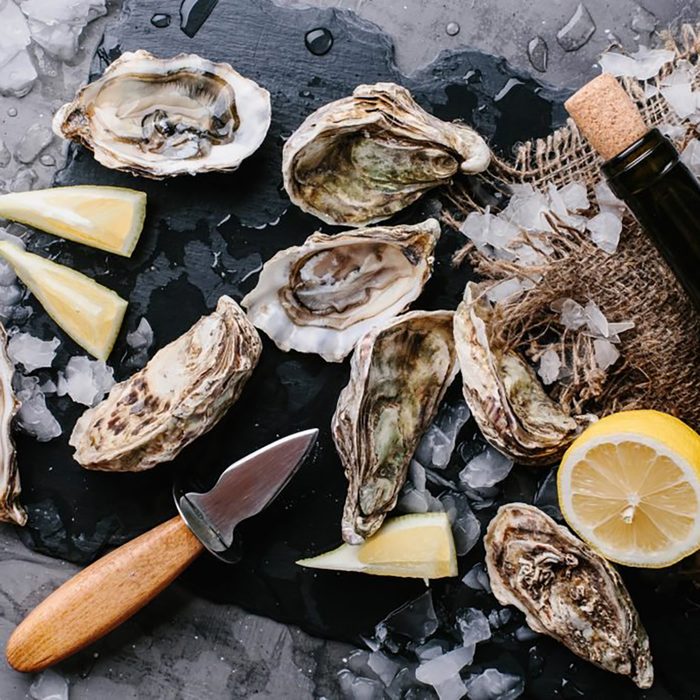
Shells
Hard shells from seafood, such as crab, lobster, shrimp and oysters are a common garbage disposal problem. Many of these shells are far too dense to grind up properly, while the ones that might slip through (like shrimp) have a chance to catch in the drain.
So skip the disposal and drop the shells in the trash, preferably a small trash bag so that you can take it out of the kitchen immediately.